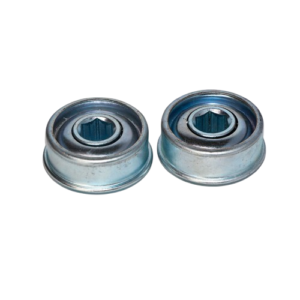In today’s automotive industry, manufacturers rely on components that combine light weight, high efficiency, and stable performance. Stamping bearings meet these demands perfectly. Produced through precision metal stamping processes, these bearings offer consistent quality, reduced material waste, and excellent cost-effectiveness—making them ideal for large-volume automotive production.
As a global bearing supplier, our team provides a wide range of stamping bearings engineered for automotive systems. Below is a detailed comparison of the main stamping bearing types and their advantages in modern vehicles.
1. Stamping Deep Groove Ball Bearings
Stamping deep groove ball bearings are one of the most common types used in automotive assemblies due to their smooth rotation and high-speed capability.
Where they are used:
Blower motors
Window regulators
Seat adjuster motors
Wiper systems
HVAC modules
Key characteristics:
Stamped steel rings reduce weight
Low friction for quiet operation
Reliable at high speeds
Easy to integrate into compact motor systems
These bearings help automakers achieve stable and quiet performance, especially in comfort and interior electric modules.

2. Stamping Thrust Bearings
Stamping thrust bearings are designed mainly for axial load support, making them suitable for rotating or oscillating mechanisms that experience forward-backward loading.
Automotive applications:
Steering assemblies
Clutch mechanisms
Small gear systems
Manual control modules
Advantages:
Cost-effective axial load solution
Compact structure for tight spaces
Reliable under repetitive axial forces
Their stamped washer design delivers both strength and affordability, ideal for high-volume automotive manufacturing.
3. Stamping Needle Roller Bearings
Stamping needle roller bearings combine a stamped outer ring with needle rollers, offering high radial load capacity in very limited space.
Common uses:
Automotive transmissions
Brake and pump systems
Engine components
Small-form rotating mechanisms
Why they are preferred:
Excellent load handling despite compact size
Lightweight but structurally strong
Suitable for both rotary and oscillating motion
These bearings are essential for space-sensitive automotive designs where performance cannot be compromised.
4. Stamping One-Way Clutch Bearings
(Also known as sprag or roller clutch bearings)
These bearings allow rotation in one direction while locking instantly in the opposite—making them critical for torque control.
Typical automotive uses:
Starter motors
Alternators
Overrunning clutches in transmissions
Benefits:
Smooth and efficient torque transmission
Quick locking performance
Durable under high-speed cycling
Their reliability makes them indispensable in starting and charging systems.
5. Stamped Bearing Units (Integrated Housings)
Some automotive assemblies require a pre-lubricated, ready-to-install solution. Stamped bearing units integrate a bearing with a stamped metal housing for easy installation.
Main applications:
Wiper motors
Electric seat systems
HVAC fans
Actuator systems
Advantages:
Faster assembly and reduced labor
Strong sealing to resist dust and moisture
Lower production cost for OEMs
These units provide stable performance while simplifying module design and assembly.
How to Choose the Right Stamping Bearing
When selecting a stamping bearing for an automotive project, consider the following factors:
Load type: radial, axial, or combined
Operating speed and noise requirements
Available space and weight restrictions
Temperature and environmental exposure
Expected service life and maintenance intervals
With the increasing demand for energy-efficient and lightweight vehicle components, stamping bearings continue to play a central role in modern automotive engineering.
Copyright © NSAR Bearings. All rights reserved. Privacy Policy